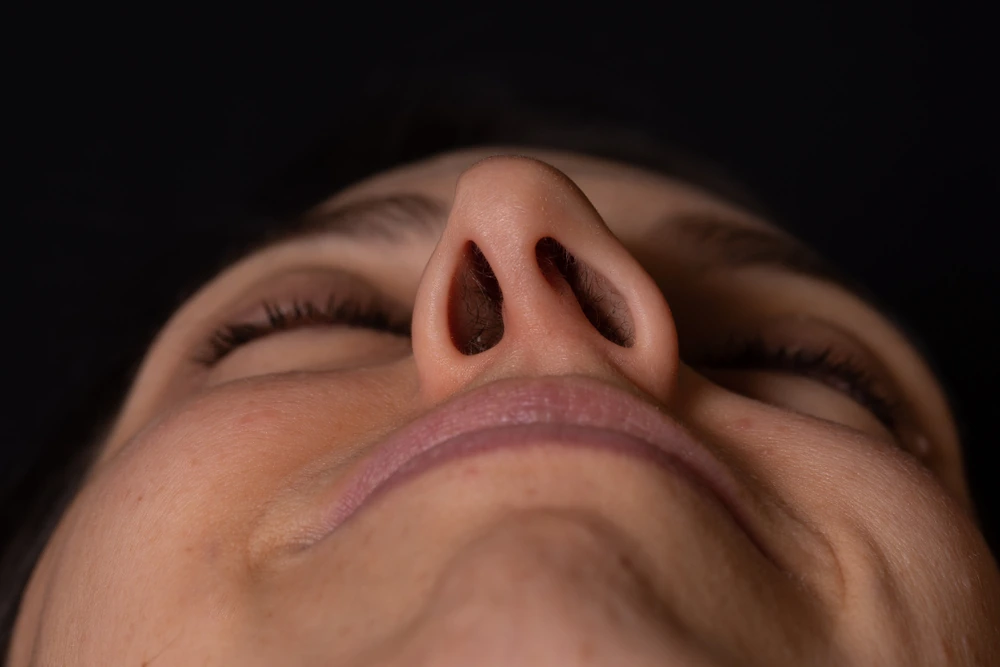Blog
Understanding the Nasal Septum:
Why It’s Deviated in Most Adults

In his latest video, Dr. Shawn Allen, a leading ENT specialist in Houston and The Woodlands, Texas, with extensive experience in nasal health and sinus surgery, delves into the intricate details of the nasal septum and why many adults experience septal deviation. If you’ve ever wondered about the structure of your nasal passages and why breathing might sometimes feel uneven, this blog will shed light on these common concerns.
What is the Nasal Septum?
The nasal septum is a vital structure in our respiratory system, serving as the dividing wall between the two nasal cavities. It extends from the base of the skull down to the floor of the nose, playing a crucial role in directing airflow and supporting the nose’s overall structure. It’s important to note that a deviated septum is a common condition, affecting up to 86.6% of adults. But why is it that most adults end up with a deviated septum? To understand this, let’s dive into the anatomy and common causes of septal deviation.
Nasal Septum Anatomy: A Closer Look
The nasal septum is made up of both cartilage and bone. The anterior, or front portion, is composed of cartilage, which you can easily see when looking into the nostrils. This part of the septum starts in an area known as the columella, separating the two nostrils. Further back, the septum transitions into bone, extending to the rear of the nasal cavities and ending at the opening of the nasal pharynx.
Mucosa lines the septum and can vary in thickness. When inflamed due to allergies or chronic nasal decongestion, this mucosa can become quite thick, while it may be very thin in atrophic conditions.
Why Does the Septum Deviate?
A deviated septum occurs when the nasal septum is displaced to one side, causing one nasal passage to be smaller. This deviation can happen for several reasons:
- Birth and Development: Many people are born with a slightly deviated septum due to the pressures exerted on the nose during childbirth. Additionally, as we grow, the septum may not develop perfectly straight.
- Injury or Trauma: A common cause of septal deviation is injury to the nose. This can result from sports, accidents, or even minor bumps and falls that cause the cartilage or bone to shift out of alignment.
- Aging: The nasal structures can change over time, and the septum may deviate gradually. This deviation is a natural part of aging and affects many adults.
Impact on Nasal Function
A deviated septum can lead to various breathing difficulties. The severity of symptoms can range from mild to significant, depending on the degree of deviation. Swell bodies near the front of the septum can also enlarge periodically, similar to nasal turbinates, impacting airflow. However, deviations and spurs typically cause constant obstructions, leading to chronic nasal congestion and discomfort.
Recognizing the Symptoms
Identifying a deviated septum can be challenging as symptoms often overlap with other nasal conditions. Key indicators include:
- Persistent nasal congestion or difficulty breathing through one nostril
- Frequent nosebleeds
- Recurrent sinus infections
- Snoring or noisy breathing during sleep
- Sleep apnea
- Headaches
Achieving Optimal Nasal Health
Understanding the structure and common issues related to the nasal septum is crucial for maintaining nasal health. By gaining this knowledge, you can better manage your nasal symptoms and make informed decisions about your health. If you experience persistent nasal symptoms and believe you may be suffering from a deviated septum, consider consulting Dr. Shawn Allen. With expert evaluation and appropriate treatment, you can achieve better breathing and overall well-being. Contact us today to schedule an evaluation and explore the best options for your nasal health.